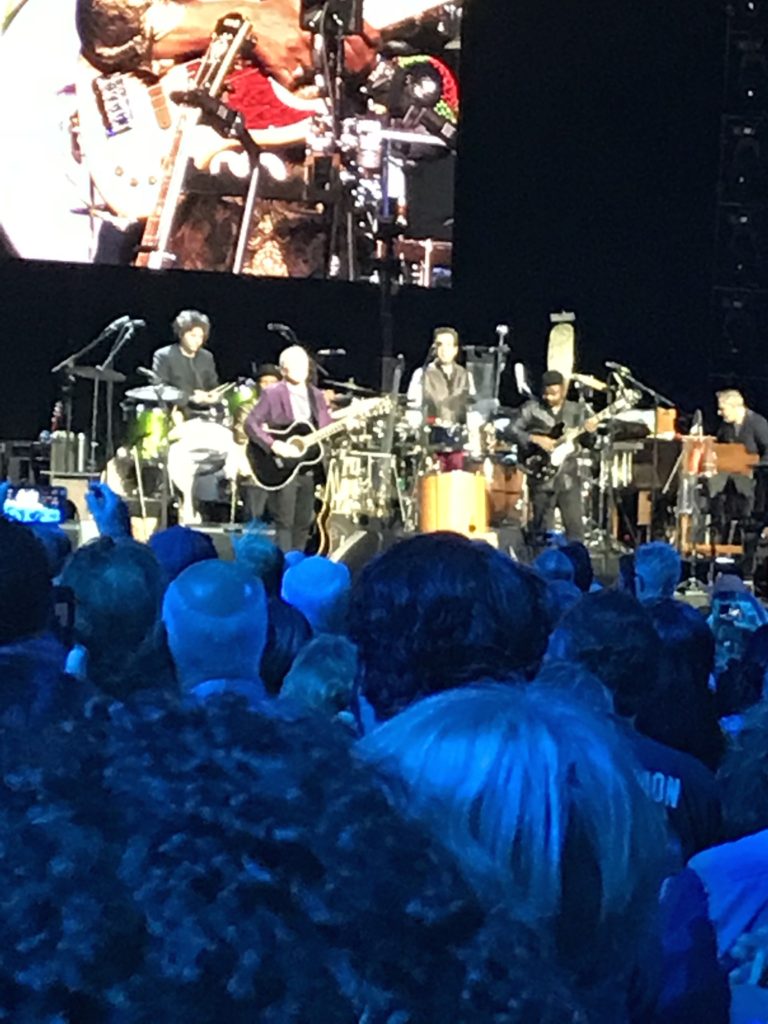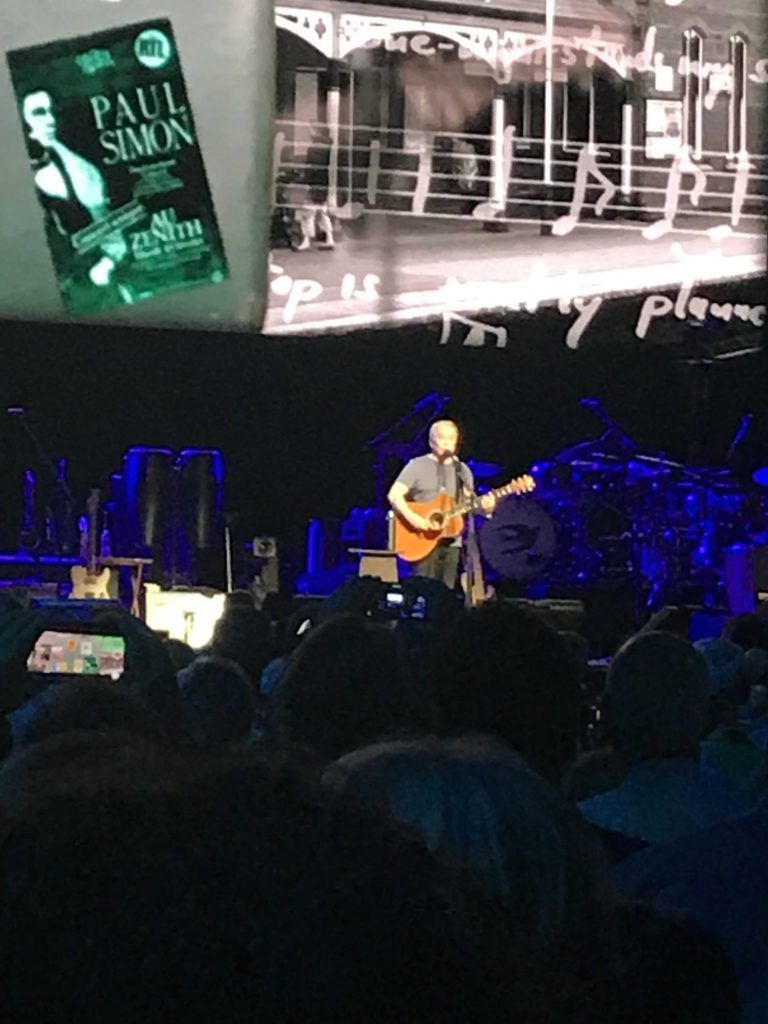 Gradually, in 1964 and 1965, my onsetting adolescence, arriving amid a changing world, new influences and interests came into my life.Some really stuck: Marvel comics, so bold and imaginative; The Man from UNCLE, so exotic and seemingly sophisticated; and Top 40 radio, most especially the performers of the folk rock genre, most particularly Simon & Garfunkel. Bookish, socially awkward, non-athletic, kind of mama’s boy–I couldn’t relate very easily to the romantic, amorous songs that dominated the radio, no matter how much I liked the Beatles and the other popular bands. But moody, broody, brainy Simon & Garfunkel? They were my guys! And yes, I liked Dylan, but I knew I wasn’t Dylan–not as angry, as critical, as arch. But I felt one with Simon & Garfunkel as they observed the world, taking stock of its ironies and incongruities and shortcomings. And I understood the loneliness–the singer who wished he was homeward bound, the man who felt like a rock, the boy on the bus who was empty and aching and didn’t know why. Somehow, that was the perspective to which I easily gravitated. Though never alienated, I was from early on a square peg, and Simon & Garfunkel were my role models. In cold months I took to wearing a big muffler, like they did on their Sounds of Silence album.
Gradually, in 1964 and 1965, my onsetting adolescence, arriving amid a changing world, new influences and interests came into my life.Some really stuck: Marvel comics, so bold and imaginative; The Man from UNCLE, so exotic and seemingly sophisticated; and Top 40 radio, most especially the performers of the folk rock genre, most particularly Simon & Garfunkel. Bookish, socially awkward, non-athletic, kind of mama’s boy–I couldn’t relate very easily to the romantic, amorous songs that dominated the radio, no matter how much I liked the Beatles and the other popular bands. But moody, broody, brainy Simon & Garfunkel? They were my guys! And yes, I liked Dylan, but I knew I wasn’t Dylan–not as angry, as critical, as arch. But I felt one with Simon & Garfunkel as they observed the world, taking stock of its ironies and incongruities and shortcomings. And I understood the loneliness–the singer who wished he was homeward bound, the man who felt like a rock, the boy on the bus who was empty and aching and didn’t know why. Somehow, that was the perspective to which I easily gravitated. Though never alienated, I was from early on a square peg, and Simon & Garfunkel were my role models. In cold months I took to wearing a big muffler, like they did on their Sounds of Silence album.
Later I worked out a niche, but I never really lost an affinity for Paul Simon‘s music. Often when his songs appeared, they felt like post cards from an older classmate or a youngish teacher, maintaining from different places the conversation we had begun so many years before. I really liked the Graceland album, and the theme of universality that he carries through the album. In 1986, when that album appeared, I was settled enough into marriage and a New York adulthood to thrill at his mentions of the bodegas on upper Broadway and the Lone Star Cafe, his witty references to the roly poly bat faced girl and to the cinematographer’s party, to the man who asks why he is soft in the middle when the rest of his life is so hard. And then there was the brilliant Boy in the Bubble, a jublant, frightened, amazing piece of journalism with an astonishing beat.

I have seen Simon peform three times. Once, in 1966 or so, at the Lyric Theater in Baltimore, with my sister and some classmates, when I was a tender and callow fellow; in 1986, when Mary McCartney and I were part of the horde who fell upon the Great Lawn 800,000 strong to hear Paul and Artie sort of reunify; and this week, at Madison Square Garden, on the second to last night of Simon’s Farewell Tour. It was a great show. In front of a 15 piece band, Simon moved and played energetically and sang strongly: he was everything one ever hoped he would be: singer, guitarist, songwriter, poet, bandleader, entertainer, artist. He played 25 songs and performed two encores, and left nothing unsaid or unsung. He ended his night as he and Garfunkel began their careers a half century earlier, with the portentous Sounds of Silence. After he and his big band had played two of his most thoughtful pieces, The Boxer and American Tune, Simon took to a stool alone with his guitar, once again a poet and one man band, as he had been in Greenwich Village a half century ago. Simon prefaced the last performance with one phrase. “Strange times,” he said. With that, the young man’s song became the valediction of the man in full.
